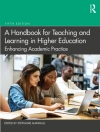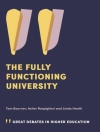For people living in U.S. cities, social services come not only from the government but increasingly also from local religious communities. Ever since the Clinton administration’s welfare reform, faith-based institutions, and especially congregations, have been allowed to bid for federal funds for their programs. In The Other Philadelphia Story, drawing on the first-ever census of congregations in any American city, Ram Cnaan and his colleagues provide an authoritative account of the functioning of congregations, their involvement in social services, and their support of other charitable organizations.
An in-depth study of 1, 392 congregations in Philadelphia, the book illuminates how these groups function as community hubs where members and neighbors alike gather throughout the week. Cnaan’s findings show that almost every assembly of parishioners emphasizes caring for others, even if the help is modest. Thus American congregations uphold an implicit but strong norm of social responsibility and work to improve the quality of life for members and nonmembers alike.
Many of the problems associated with urban life persist in the face of governmental inaction, and the burden of responsibility cannot be shouldered entirely by congregations. However, in a city such as Philadelphia, where half the residents are regular attenders of religious congregations, hopes for urban improvement are largely to be found in these local groups.
Special focus is given in the book to kinds of care that often go unnoticed: volunteerism, provision of refuge, and informal assistance to community members in need. All told, Cnaan asserts, congregations are an essential component of Philadelphia’s civil society. Without them, the quality of life would deteriorate immeasurably.
قائمة المحتويات
SECTION I: INTRODUCTION TO THE FIELD OF STUDYING CONGREGATIONS
Chapter 1: ‘Here is the Church; Here is the Steeple’: Defining and Measuring Religious Congregations
Chapter 2: The Religious Landscape in Philadelphia
Chapter 3: The organizational behavior of the congregations in our study
SECTION II: CONGREGATIONAL CONTRIBUTION TO QUALITY OF LIFE IN URBAN AMERICA
Chapter 4: Informal Care by Congregations
Chapter 5: Formal Care—Congregations as Social Service Agencies
Chapter 6: Using Space for Good Use
SECTION III: SPECIAL CONGREGATIONS AND SUBGROUPS
Chapter 7: Black Congregations in the City of Brotherly Love
Chapter 8: Latino congregations in the 21st century
Chapter 9: Women in congregations and social service provision
SECTION IV: AREA ORGANIZATIONS THAT ENHANCE THE CONGREGATIONAL SOCIAL SERVICE CAPACITY
Chapter 10: Interfaith coalitions—The Story of the Northwest Interfaith Movement (NIM)
Chapter 11: Using the congregational capacity to help the homeless—the NPIHN story
Chapter 12: Utilizing congregational volunteers: The stories of Amachi and REST Philly
SECTION IV: CONCLUSIONS AND IMPLICATIONS
Chapter 13: The world of the clergy: Contextual necessities and leadership challenges
Chapter 14: Policy recommendations
Appendix I: Methods
References
Acknowledgments
عن المؤلف
Ram A. Cnaan is Professor, Associate Dean for Research, and Chair of the Doctoral Program in Social Welfare, as well as Director of the Program for Religion and Social Policy Research, at the University of Pennsylvania School of Social Policy and Practice. He is the author of The Newer Deal: Social Work and Religion in Partnership and The Invisible Caring Hand: American Congregations and the Provision of Welfare.












